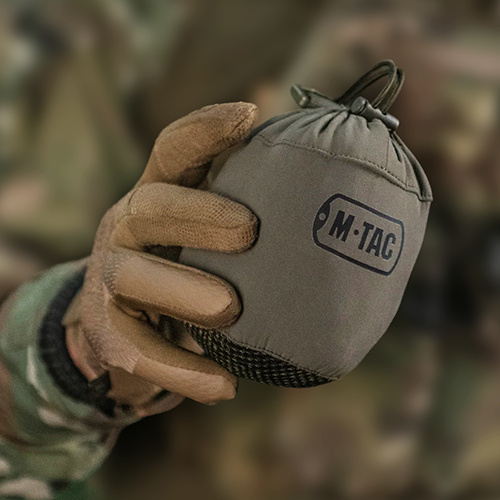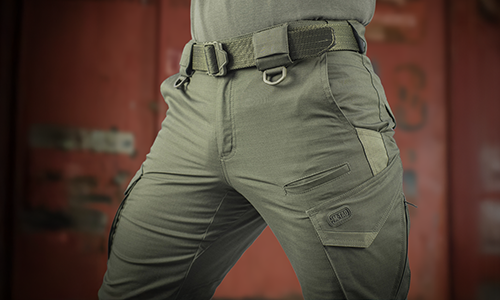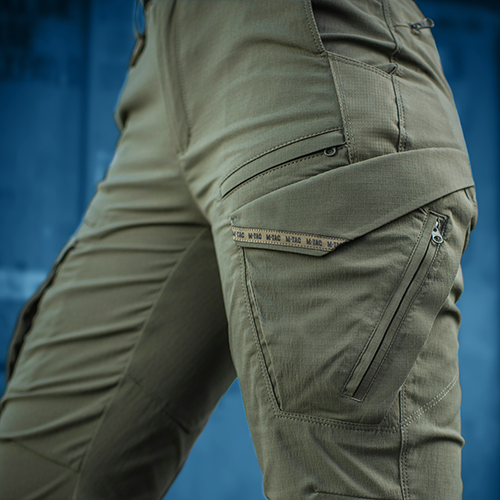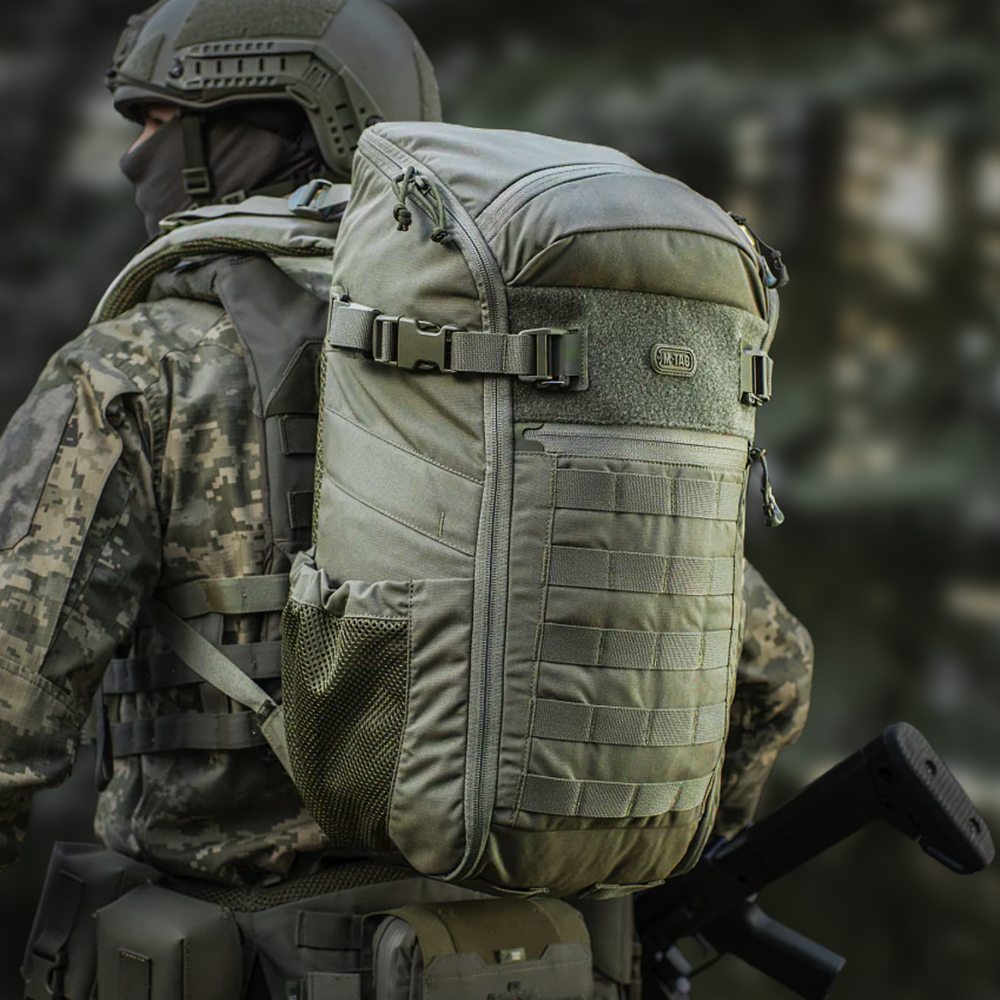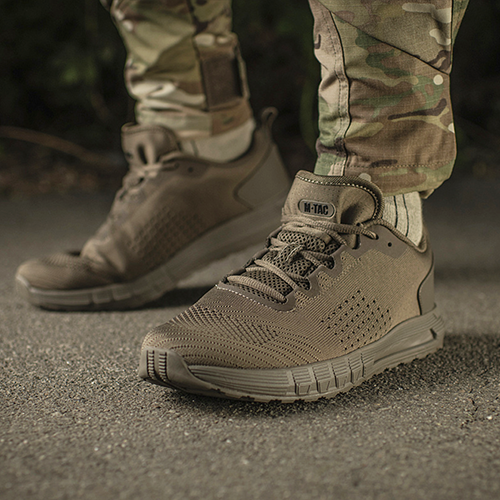Products care information

Before washing, empty the pockets and fasten all zippers & Velcro cuffs. It's recommended to wash soft shell clothing by hand in cold water, up to 30°C or 80 F, and avoid rubbing or crumpling it too intensely. Machine washing is also allowed at a water temperature of up to 30°C or 80 F, using the delicate cycle and with no other materials in the load. Pre-treat any stains, and choose a gentle detergent. Additionally, use extra rinsing and minimize the revolutions during machine washing.
Avoid using regular laundry detergent, fabric softeners, or bleach, as they can clog the fabric's pores. Liquid detergent is the best option. It is not recommended to twist or squeeze softshell fabric, rather let excess water drain naturally. It is best to dry such clothes in the fresh air, but in no case near heaters. High temperatures and drying near heaters or open fire can negatively affect the material's composition.
Prohibited actions:
- Dry and aggressive chemical cleaning;
- Bleaching, softening, or conditioning;
- Ironing.
However, following all instructions over time will not protect the external water-repellent impregnation of softshell fabric. To maintain this feature, consider using additional water-repellent products. They can come in the form of a spray applied only to clean clothes or rinse aid. However, with proper use and care, softshell products can provide long-lasting benefits.

Before washing, empty the pockets and fasten all zippers and Velcro cuffs. It is also necessary to turn the pants inside out to maintain their appearance.
Choose the gentlest washing powder possible. Avoid bleach, fabric softeners, conditioners, as they can negatively affect fabric's structure & break down the tough fibers that protect against water and dirt. That is why the usage of aggressive chemicals can accelerate product wearout. Wash your pants in cold water, using the delicate cycle, and a water temperature of up to 30°C or 80 F. High temperatures can negatively affect the fabric and cause the product color to fade.
When using a washing machine, dry your pants at a low temperature. After washing, immediately remove the pants from the drum to prevent creases. If you choose to air dry your pants, avoid direct contact with UV light to prevent the product color from fading.

Fleece is a versatile material increasingly used in modern products due to its easy care, hypoallergenic properties, and comfort. While it is recommended to hand-wash fleece products in warm water, machine washing is also possible with certain conditions:
- The washing temperature should not exceed 30-40°C or 80 F-110 F.
- Select the delicate cycle.
- Use liquid detergent instead of regular powder.
If washing by hand, dissolve the detergent in water beforehand. Avoid using bleach and fabric softeners, as they can negatively affect the fabric's structure. Fleece products dry quickly and should be air-dried instead of using a dryer or placing them on a radiator. Machine drying or any other artificial heat can deform and damage the item.
Ironing fleece is prohibited, as it can damage the fabric's properties and softness by deforming the pile. Avoid using chemical stain removers, as you also risk wasting the material. In case of complex contamination or a stain that is not removed by washing, opt for gentle products specifically for removing stains from fleece.
By following these tips, you can ensure that your fleece products remain soft, comfortable, and long lasting.

The prejudice against synthetic fabrics is outdated because the new generation of materials is breathable, soft, and lightweight. mThey dry quickly and maintain their attractive appearance for a long time. However, like any other material, improper care can cause the product to lose it's original properties and appearance quickly.
Polyester, made from petroleum products, is used to manufacture many types of clothing due to its high strength and wear resistance. Products made from polyester retain their shape well, are UV-resistant, wrinkled-free, and dry quickly.
Recommendations:
- Use a washing machine but at a temperature of up to 40°C or 110 F;
- Use gentle laundry detergents;
- Do not use a centrifuge to dry;
- Iron at the "silk" temperature setting.
Avoid storing dirty and wet clothes for an extended time. If you do not wash your clothes, the smell can penetrate the fabric сan absorb the smell, and be difficult to remove. If you cannot wash your clothes right away, dry them before placing them in the laundry basket. Use laundry bags. Special mesh bags for washing protect clothes from snagging, chafing, and pilling.
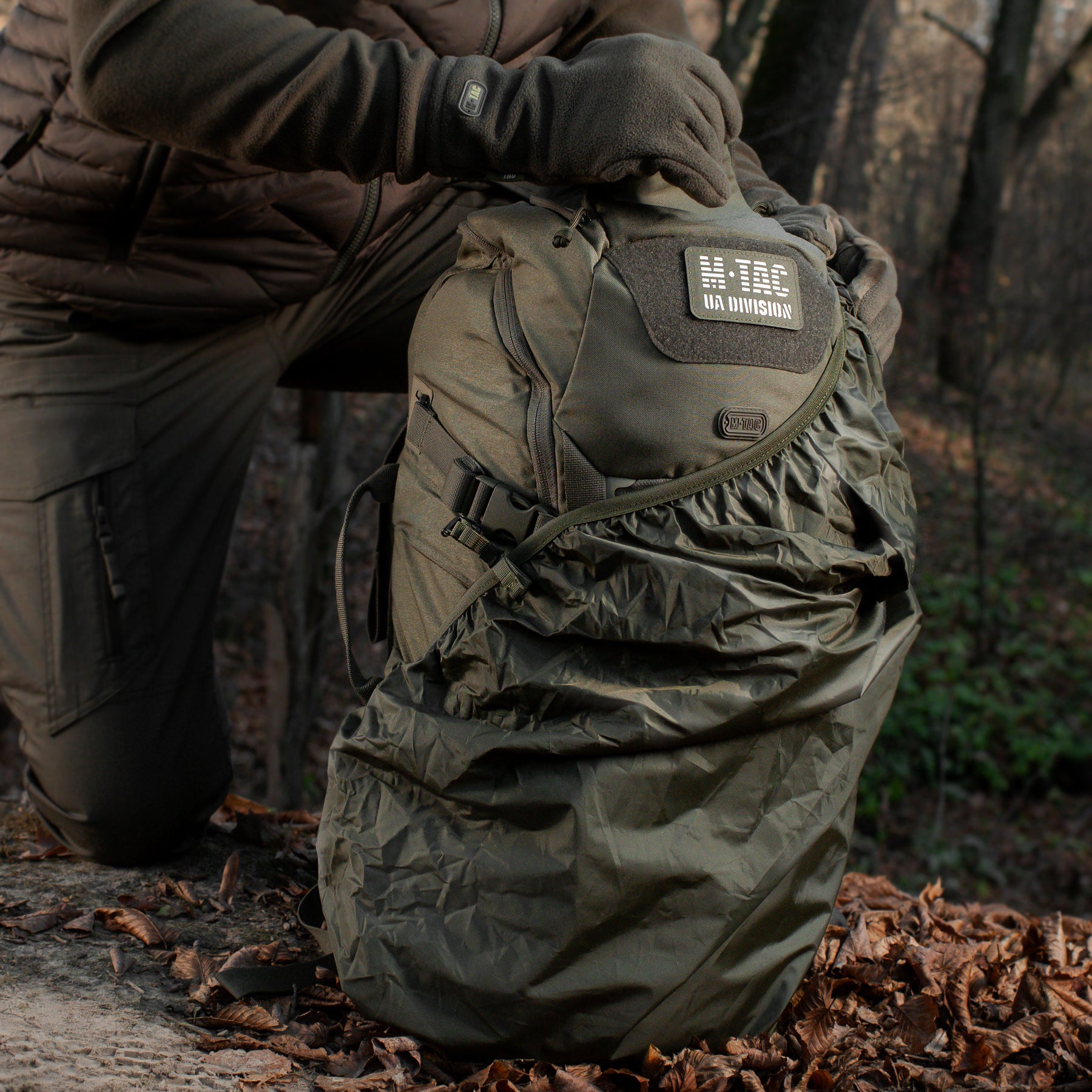
Bags and backpacks typically do not require extensive cleaning or washing. It may suffice to remove dirt with a brush or damp cloth. Avoid washing bags or backpacks in the washing machine, as this could damage both the item and the machine.
Caring for bags and backpacks is simple. First, empty the bag or backpack from stuff and remove any detachable parts. Shake off any excess dirt or trash. For stains, pre-treat them with a remover and use a soft brush to clean the affected area. Place the bag or backpack in a container and fill it with cool water and liquid detergent, then use a soft-bristled brush or cloth. Drain the dirty water and rinse the detergent thoroughly. Squeeze out any excess water and hang the bag or backpack upside down to air dry.
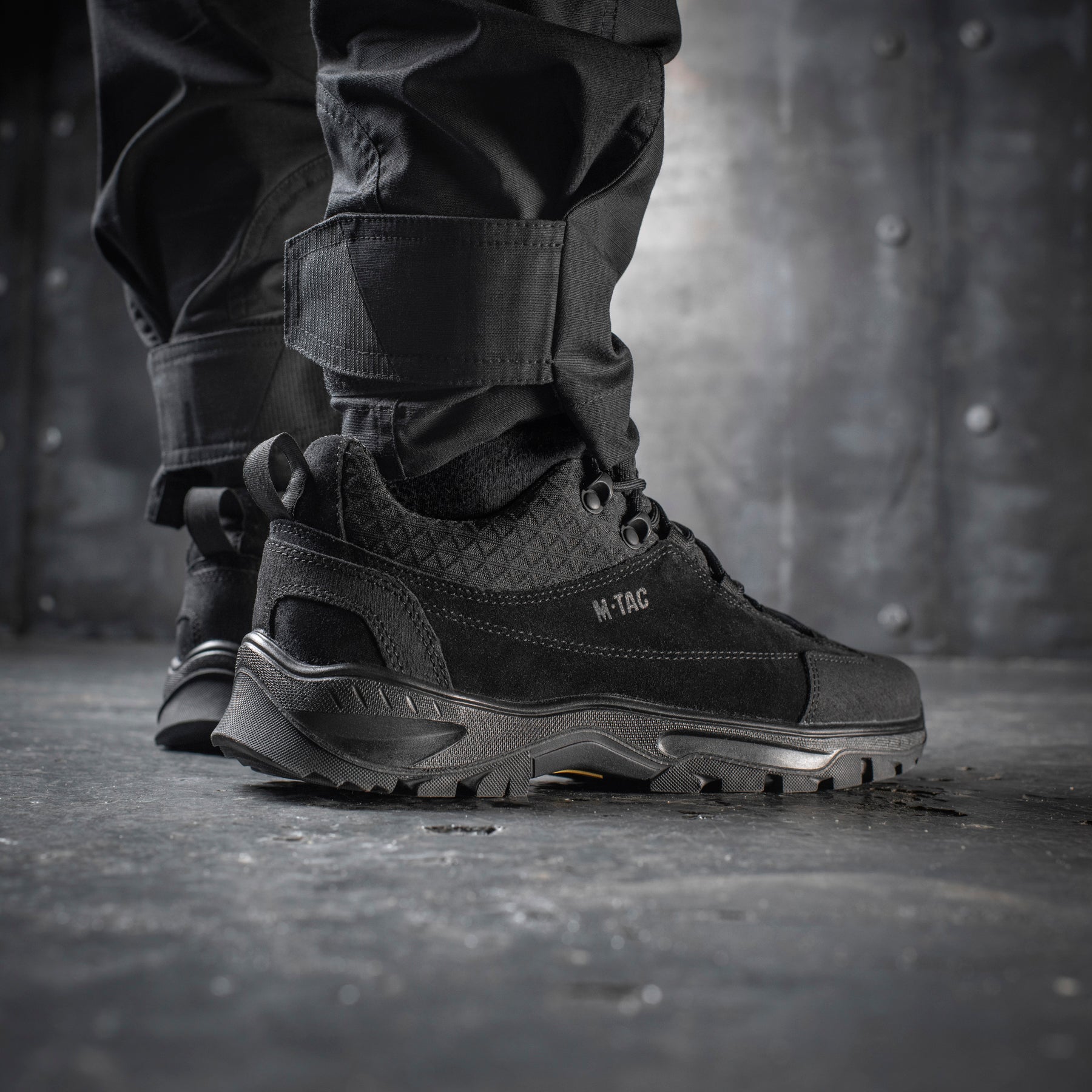
The durability of your shoes depends on your attitude and the care you provide them!
To protect your shoes from moisture and dust, be sure to treat them with a special spray before wearing them for the first time, and continue to use them periodically.
Avoid washing your sneakers in the washing machine, as the stitching and other structural elements may not withstand such an impact. The same goes for soaking. However, you can wash the insoles and laces in a washing machine. To clean your sneakers, start by removing the insoles. If your shoes are dirty, use a brush to remove all dirt. Then, use a cleaner that provides deep cleaning, does not damage the structure, and does not alter the product color. Such a cleaner effectively removes various types of dirt, stains, and streaks.
Begin by removing dirt and dust from your sneakers. Then, use a soft brush and a special detergent or a solution of warmwater and soap to clean your shoes. Apply the product to the sneakers and clean the entire surface and not just the dirty area. Rinse the brush periodically in clean water to prevent rubbing existing dirt into your shoes. After cleaning, rinse your shoes thoroughly and then wipe them with a dry microfiber cloth or towel.
The most common problem with shoes is odor. You can prevent its appearance by regularly removing the insoles after use and ventilating them properly. Use special deodorants that not only add scent but also eliminate bacteria and fungi. If your sneakers get wet from rain or after a workout, do not use a hair or machine dryer. The heat can melt the glue that holds the parts of the sneakers together, and they may fall apart. Instead, dry your wet sneakers at room temperature.

Synthetic jackets are a popular option for outerwear, so it is important to know how to care for them and wash them correctly. Although synthetics are not particularly demanding and are resistant to stains, they still need proper cleaning. For tougher stains, use a soft cloth or brush with lint, but if you need to wash the synthetic jacket, choose the correct method.
Carefully review the fabric and insulation composition indicated on your jacket's label.
Fasten all buttons and zippers, turn the jacket inside out, and if you have a laundry bag, use it. Add washing powder, but it's better to use liquid detergent. It is better washed out of the insulation.
Synthetics do not tolerate high temperatures, which lead to their deformation and violation of the integrity of the fabric. For example, incorrigible creases may appear. Make sure to wash it in warm water up to 40°C or 110 F and use a gentle cycle.
Prohibited actions:
- Ironing the jacket.
- Using a washing machine spin cycle and drying.
- Using bleach.
After washing, remove the jacket, gently wring it out by hand, and let it dry naturally. Keep it away from direct heat sources and sunlight to avoid discoloration and deformation of the fabric.

Shemagh scarves are suitable for both hand and machine washing. The best choice is a detergent specifically designed for cotton care. Cotton fabrics tend to shrink after washing, but this can be minimized by following the correct temperature regime. To avoid significant size reduction, wash colored, thin cotton fabrics at a temperature not exceeding 40°C or 110 F using a delicate washing cycle. For heavy dirt, briefly soak the item with a little detergent before washing.
Drying the Shemagh scarf in the washing machine is not recommended, as the thin material is vulnerable to physical floating. Cotton fabrics are easily wrinkled, so when hand washing, avoid squeezing and drying too close to heating devices.
If the fabric is completely dry, then it is advisable to moisten the material during ironing or use the steam supply mode. To avoid burning the product, heat the iron no higher than 200°C or 390 F. By following these recommendations for cotton fabric care, your Shemagh scarf will remain fresh and maintain its excellent appearance for years.
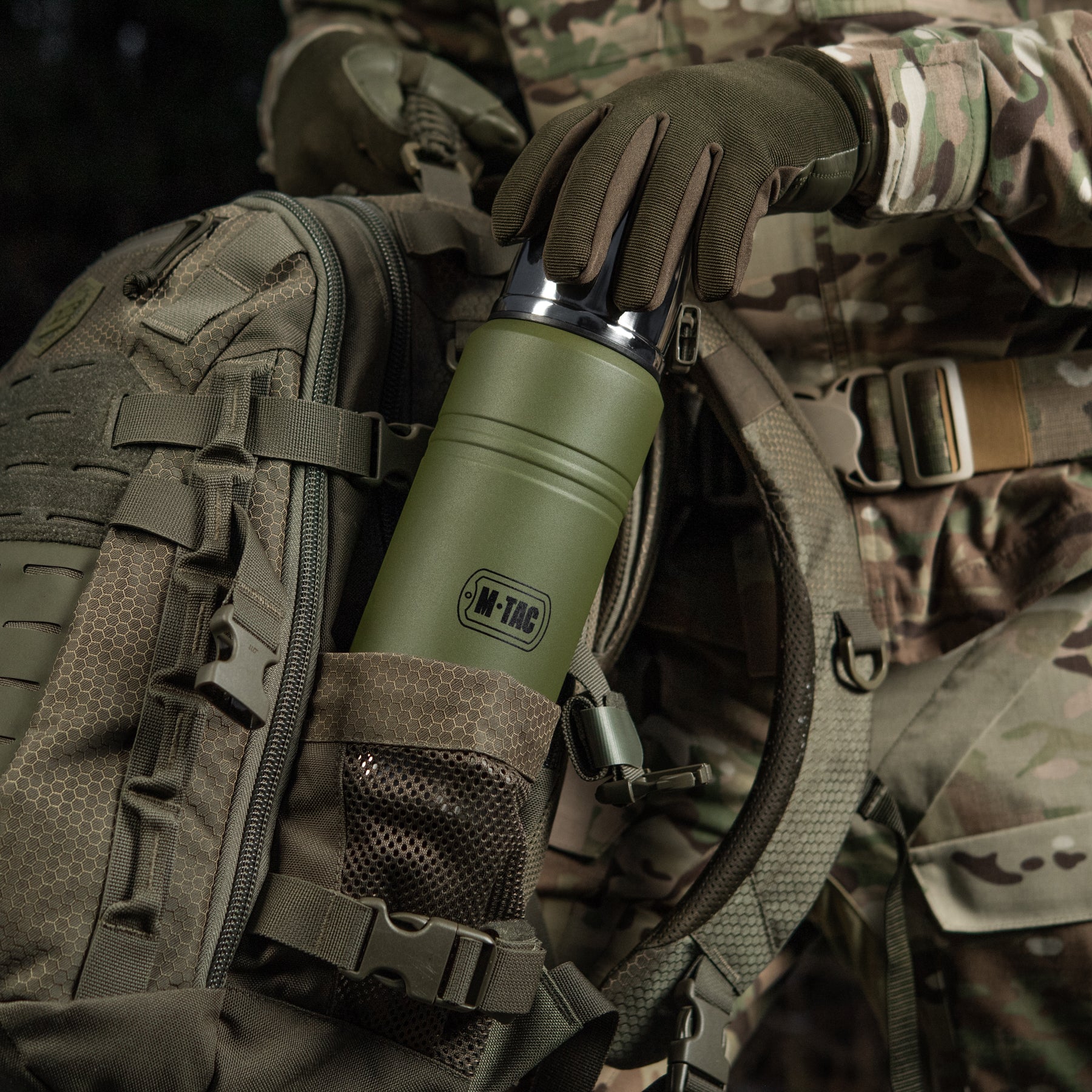
Compliance with operating rules is crucial for ensuring your safety during use, durability, and the effectiveness of thermos flasks and thermo mugs in maintaining the temperature of their contents.
While these items are convenient, it's important to use them correctly by following these guidelines:
- Wash them regularly;
- Avoid subjecting them
to pressure or tossing them around; - Do not preheat them to
high temperatures; - Avoid placing harmful
substances in them; - Store them correctly.
Before using a newly purchased thermos flask, wash it thoroughly.
Wash the inside of the thermos flask with warm water. Start by washing the inside of the flask with warm water and any non-aggressive dishwashing detergent or laundry soap. Proper cleaning not only protects you from germs but also eliminates any unpleasant odors. Disassemble the flask before washing and clean each part separately, then dry it thoroughly.
Note that it is strictly forbidden to use a dishwasher to clean thermos flasks.
Before pouring hot food or drinks into the thermos, fill it with hot water and hold it for three minutes to prepare it for maintaining the required temperature. Do not, under any circumstances, use a microwave or oven to heat the flask. Similarly, if you want to keep your drinks cool, you should first fill the flask with cold water.
When pouring liquid into a thermos, be sure not to fill it completely. The flask requires space for the stopper, which must be tightly sealed to prevent spills.
While it's tempting to pour cold soda into a thermos on a hot summer day, it's strictly prohibited. This prohibition has a very simple explanation. Carbon dioxide in carbonated water can react with the metal from which the flask is made, damaging the thermos almost inevitably. Also, you can not transfer dry ice in the flask, which will give the same deplorable result. It is not recommended to use a thermos flask for storing dairy products and diluted baby food mixes.
However, you can use it to keep clean drinking water, tea, coffee, soup, or broth. A thermos with a wide neck is perfect for accommodating a second course, providing a delicious and healthy lunch at work or a hot snack in nature.
It's important to wash the thermos after each use, preferably immediately. If traces of food or drink have settled on the walls of the flask, fill it with warm water and leave it to soak overnight. Do not rub the interior with an abrasive washcloth as it may damage the flask.
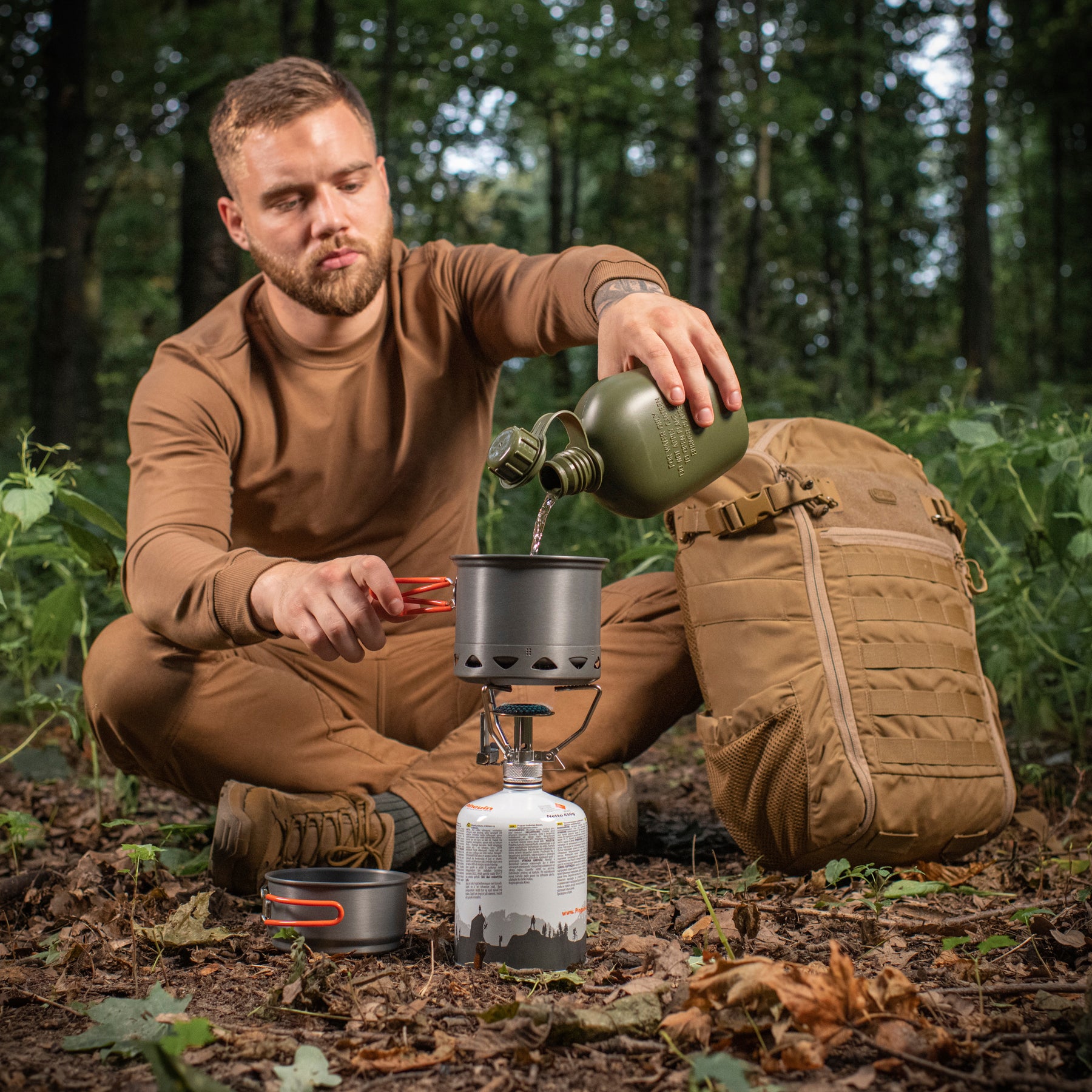
It is important to remember that the anodized coating, like non-stick Teflon, is quite fragile and can be damaged upon contact with metal objects. Therefore, do not try to wipe off traces of burnt food with a metal brush. It is also worth mentioning that aluminum has low strength and can be bent by hard objects inside a backpack during a hike or fall.
To clean camping pans, kettles, and pots from a layer of soot, grease, and other complex contaminants, use special chemicals and a sponge to avoid scratches and damage to the coating.
We do not recommend cleaning products made of:
- Aluminum;
- Cast iron.
We also suggest bringing a flat plastic scraper or spatula for non-stick dishes on a hike. They are convenient for removing burnt stuff and do not damage the surface, unlike a regular metal brush.
During a hike, there is often no access to a traditional kitchen with a sink and dryer, and clean, hot water may be in short supply. It is also essential to adhere to environmental principles, which means having as little impact as possible on the ecosystem of the place where you are located.
Here is a basic guide to help you wash dishes efficiently and environmentally in nature:
Draw water from the natural source and, if possible, warm it up. Never wash dishes directly in the source, even with the use of biodegradable products!
Start washing dishes as quickly as possible to prevent food particles from drying out on the walls. Pay special attention to pots and pans, which are typically the most heavily soiled. After distributing all portions, fill the empty pot with water and let it heat up over the fire. While you eat, the remaining food will get wet, making it easier to remove later.
Wipe greasy dishes with paper towels or toilet paper before washing them. If there is very little water available, you can skip washing the dishes altogether and simply rinse them lightly with boiling water.
